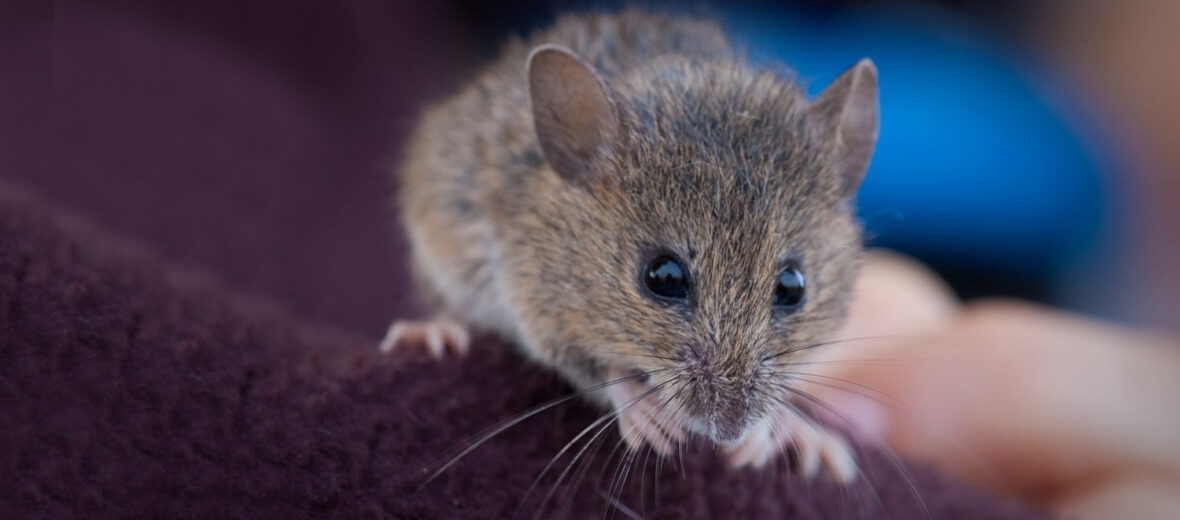
The salt marsh harvest mouse, aka red-bellied harvest mouse, hails only from the San Francisco Bay area. Their preferred habitat is salt and brackish marshes with an ample supply of pickleweed. Due to the threats of habitat destruction and loss at the hands of residential and commercial development, agriculture, and dams; invasive species (and with them disease and predation; pollution; and climate change (causing both droughts and flooding), these little critters are listed as Endangered by the IUCN. Their already fragmented population is also decreasing.
First the Stats…
Scientific name: Reithrodontomys raviventris
Weight: Up to .39 ounce
Length: Up to 2.8 inches, plus up to a 3.9 inch tail
Lifespan: Up to 18 months
Now on to the Facts!
1.) There are 2 subspecies of salt marsh harvest mice: the northern (R. r. halicoetes) and the southern (R. r. raviventris).
2.) The closest living relative of these mice is the plains harvest mouse, (R. montanus), from the midwestern United States.
3.) These mice are nocturnal (active at night), like many mice.
4.) Salt marsh harvest mice are not only adept at land-based travel, but they can climb exceptionally well, and are superb swimmers (due in part to their buoyant nature and natural swimming ability.
5.) They are solitary creatures that only come together to mate.
But wait, there’s more on the salt marsh harvest mouse!
6.) Their spherical shaped nests are made from dry grasses and sedges and positioned on the ground or in low laying vegetation.
7.) If a nest is ruined by the high tide, the individual will rapidly rebuild the nest.
Did you know…?
These rodents are actually able to drink sea water! Their kidneys have evolved to filter out the salt.
8.) A group of mice is called a colony, horde, mischief, nest, or trip.
9.) The preferred food is pickle weed and a variety of other marsh plants. They will also feast on seeds and the occasional insect.
10.) Salt marsh mice are considered to be polygynous (1 male mates with multiple females).
But wait, there’s still more on the salt marsh harvest mouse!
11.) Females undergo up to a 24 day gestation (pregnancy) that yields up to 4 pups.
12.) A female can produces up to 2 – 3 litters per year, but usually only have 1.
Did you know…?
Mice use their whiskers to detect air pressure variances, temperature, and the texture of surfaces.
13.) Pups are born altricial (blind, naked, and helpless). But they develop quickly, and in just 12 days their eyes and ears open and they begin to explore.
14.) In 24 days, the pinky mice are weaned and leave their mother’s side.
15.) Thanks to their well developed balance, they are capable of climbing roughened vertical surfaces as well as incredibly narrow walkways, like rope, string, and plant stems.
But wait, there’s still a little more on the salt marsh harvest mouse!
16.) They are capable of leaping downwards at over 13 feet and still avoid injury.
17.) When danger rears it’s ugly head, they will flee to safety and then feign death (play dead).
18.) These mice are among the few known singing mammals; along with whales, bats, and humans.
19.) In the ancient practice of shamanism, mice symbolize discovery, organization, scrutiny, and wisdom.
20.) Hawks, owls, gulls, snakes, weasels, nonnative red foxes, and feral & domestic cats all prey on these little mice.
Now a Short Salt Marsh Harvest Mouse Video!
Be sure to share & comment below! Also, check out the Critter Science YouTube channel. Videos added regularly!
Want to suggest a critter for me to write about? Let me know here.
Some source material acquired from: Wikipedia & IUCN
Photo credit: Pacific Southwest Region USFWS



